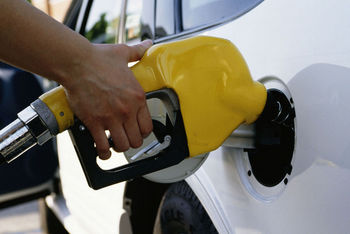
| Monday, October 17, 2011 | Archives | Advertise | Online Buyer's Guide | FLEETSolutions |
Analysis: New Fleet Fuel Economy Standards Will Save Americans Over $44 Billion At The Pump
 A new analysis by the Natural Resources Defense Council (NRDC) and the Union of Concerned Scientists (UCS), which are both members of the Go60MPG.org coalition, shows that new fuel economy standards announced by the Obama administration to require automakers to achieve a fleet fuel economy average of 54.5 miles per gallon (MPG) and emit 163 grams of carbon dioxide per mile by 2025 are expected to: A new analysis by the Natural Resources Defense Council (NRDC) and the Union of Concerned Scientists (UCS), which are both members of the Go60MPG.org coalition, shows that new fuel economy standards announced by the Obama administration to require automakers to achieve a fleet fuel economy average of 54.5 miles per gallon (MPG) and emit 163 grams of carbon dioxide per mile by 2025 are expected to:
Natural Resources Defense Council Senior Vehicles Analyst Luke Tonachel said: "As shown in our analysis, raising fuel efficiency standards to the new level will deliver significant economic, environmental, and national security benefits. Americans will be able to keep thousands of dollars in their pocket over the life of a new vehicle, while breathing cleaner air. It's a win-win for everyone involved." Union of Concerned Scientists' Clean Vehicles Program Senior Washington Representative Brendan Bell said: "Strong standards will help lower the cost of driving for consumers in every state. Automakers have the technology to make any car, truck, or SUV cleaner and more fuel efficient. No matter where you live or what kind of vehicle you drive, these standards will save you money at the gas pump." Top Twenty States for Total Net Pocketbook Savings in 2030: 1. Texas – $5.024 billion ($425 per household) 2. California – $4.954 billion ($314 per household) 3. Florida – $4.223 billion ($371 per household) 4. North Carolina – $1.768 billion ($372 per household) 5. Georgia – $1.607 billion ($364 per household) 6. Arizona – $1.536 billion ($387 per household) 7. New York – $1.485 billion ($205 per household) 8. Virginia – $1.366 billion ($365 per household) 9. Illinois – $1.190 billion ($240 per household) 10. Tennessee – $1.148 billion ($396 per household) 11. Washington – $1.060 billion ($319 per household) 12. Ohio – $1.058 billion ($234 per household) 13. Pennsylvania – $991 million ($200 per household) 14. Michigan – $976 million ($240 per household) 15. Maryland – $960 million ($365 per household) 16. Massachusetts – $881 million ($327 per household) 17. Colorado – $825 million ($370 per household) 18. Missouri – $793 million ($314 per household) 19. Minnesota – $767 million ($316 per household) 20. Louisiana – $739 million ($415 per household) The new standards are fleet average requirements, which means that some vehicles would have higher fuel efficiency and some would be lower. The standards are pegged to specific laboratory tests instead of real-world driving conditions. In 2025, cars and trucks will average closer to forty miles per gallon in actual driving, which is nearly double today's on-road average of twenty-two mpg. |
 |
NAFA Fleet Management Association 125 Village Blvd., Suite 200 Princeton, NJ 08540 Telephone: 609.720.0882 Fax: 609.452.8004 |








